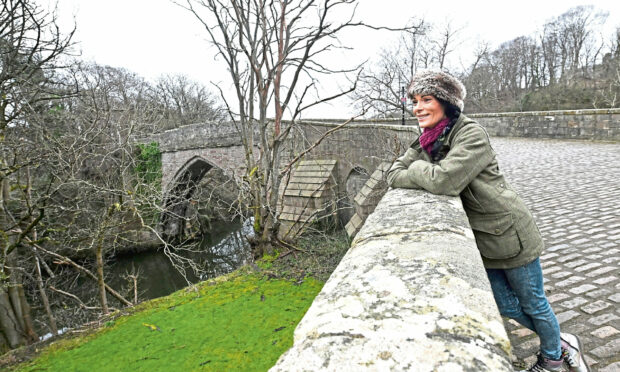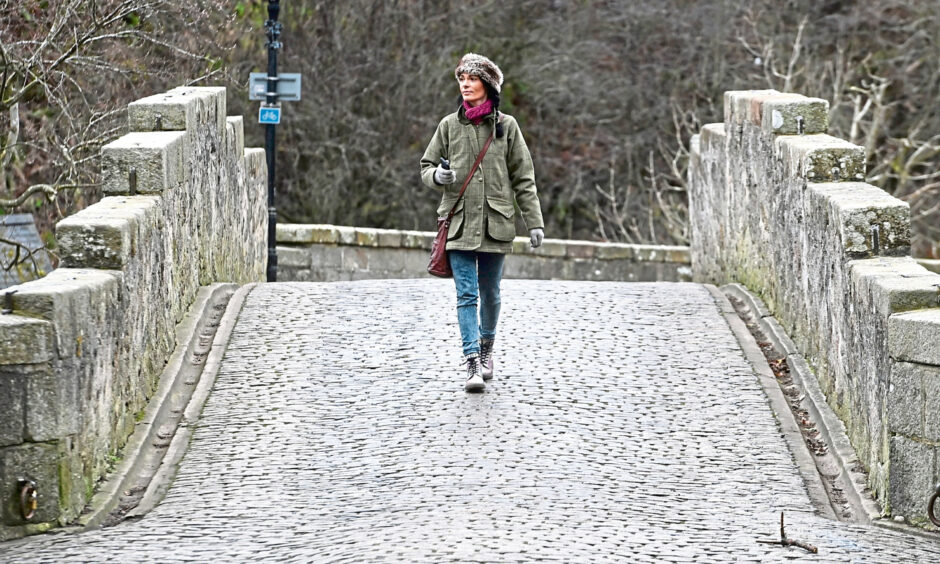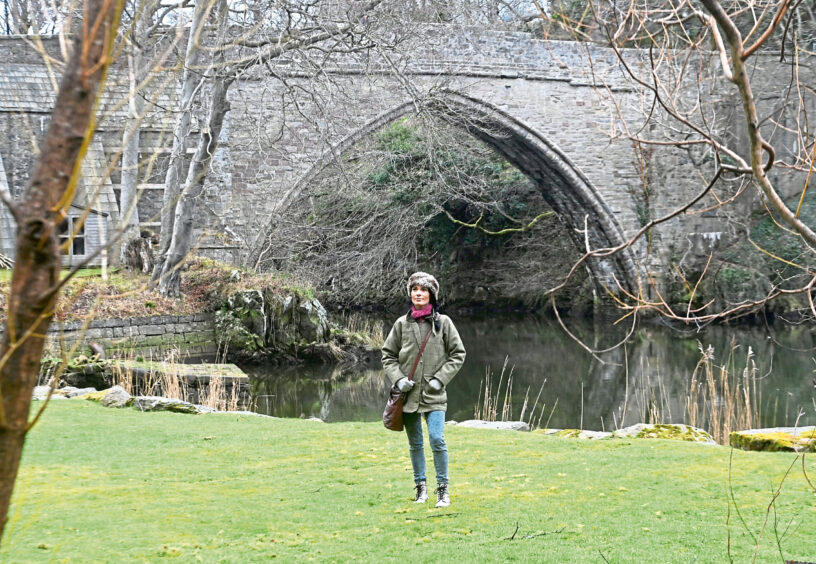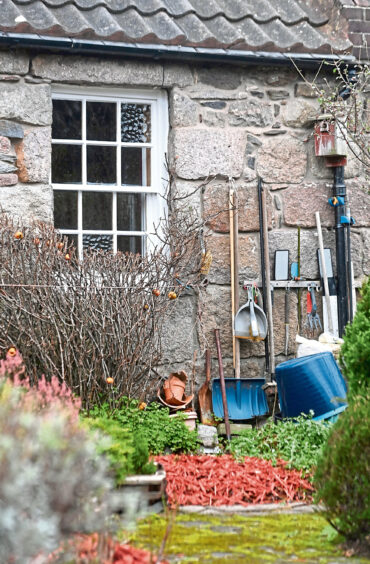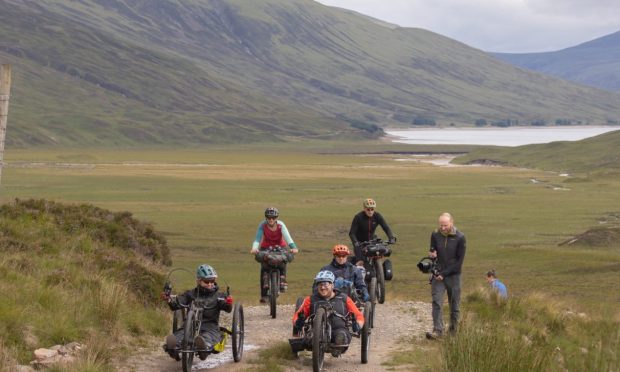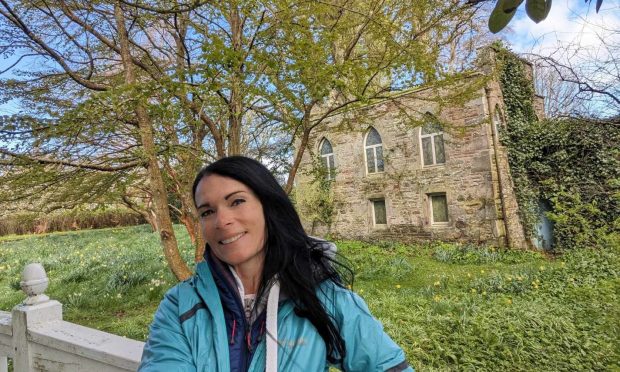Gayle explores historic Brig o’ Balgownie – Scotland’s oldest medieval bridge – and heads along to Donmouth nature reserve.
As I stroll across the Brig o’ Balgownie and gaze down into the deep black pool below, I feel as though I’ve been transported back in time to medieval Aberdeen.
Horses and carts no longer clatter across the cobblestones, and nor do armies march across the bridge, defending Scotland’s shores, but it’s still a popular spot among those lucky enough to have discovered this somewhat “hidden” gem.
Local legend suggests that the work to build the bridge – a stunning single gothic diamond arch made from Aberdeen’s signature grey granite, combined with sandstone – was started by Bishop Henry Cheyne in the late 13th Century and completed by Robert the Bruce in 1320.
The bridge that stands today is the result of rebuilding and renovation work in the early 17th century – when it was the main crossing on the River Don leading north from Aberdeen, before the new Bridge of Don was completed in 1831.
It’s certainly in a romantic setting, and one that inspired poet Lord Byron. He attended Aberdeen Grammar School, and fondly recalls the Brig o’ Balgownie in his epic satire Don Juan.
Throughout its history the bridge has been considered a hugely important asset. For 500 years, possession of the bridge was the only way to move large armies quickly along the eastern coast of Aberdeenshire while it also provided a trade route to the wealthy areas of the north-east.
Today the bridge is among the last reminders of early medieval Aberdeen, and is something of a landmark for students, being the place from which some jump upon graduating. However, this is NOT to be recommended! No tombstoning please, folks!
At its shallowest points the River Don is only about 17ft and contains many obscured rocks, so the danger is very real.
Rather, simply savour the scenery around you, and drink in the beauty and aura of the place; it’s very special.
I’m lucky enough to spot a curious seal, its glossy black head bobbing up out of the water in the pool (evocatively named the Black Neuk) under the bridge. It’s a haven for nature, and roe deer, otters, swans and many other birds are often spotted here.
On the east side of the bridge is Cottown of Balgownie, a chocolate-box row of late 18th Century terraced industrial workers’ cottages. Most of the tiny gardens are festooned with flowers, and the roofs of the listed buildings are pan-tiled.
Head down a stone staircase, through woodlands, to the riverside, and you can follow the Don as it flows downstream to the estuary.
It’s a gorgeous wee walk along the shady banks, the meandering pathways lined with mature trees.
The paths lead to the entrance of Donmouth local nature reserve, at the mouth of the river of the shores of South and North Donmouth Beach.
It’s intriguing to see the landscape changing from woodland to seascape, the wide open space of the North Sea in striking contrast with the intimate trails around Balgownie.
It’s pretty exposed down on the beach when I visit, and rain threatens, but it’s a refreshing experience, and, when the wind whips up the sand into my face, rather an exfoliating one.
A storm is brewing and ships and tankers galore are queued up, waiting to get into the harbour.
And yet, the beach is quiet. I pass only three other walkers, and see a group of people in the distance. Perhaps the wild weather put most folk off?
A trip to the Brig o’ Balgownie – and, if you fancy a stretch of the legs and some sea air, a stroll down to Donmouth nature reserve – is a great way to spend a morning of afternoon if you’re in or around the Aberdeen area.
And if you’re need of a warming cup of coffee afterwards, there are cafes galore at nearby Aberdeen beach front.
Information:
- Brig o’ Balgownie is a Scheduled Ancient Monument and is one of the oldest bridges in Britain. It was completed around 1320 supposedly at the behest of King Robert the Bruce.
- It’s commemorated by Lord Byron in his epic poem Don Juan (1819-1824). In a side note, Byron recalls crossing the bridge in his childhood with his friend, and being both reluctant and delighted, as he knew the legend, which (in his own words) goes: “Brig o’ Balgownie, black’s yer wa’; Wi’ a wife’s ae son, and a meer’s ae foal, Doon ye shall fa’.” In essence, the proverb tells that an only son crossing the bridge on a horse that is also an only offspring will cause the bridge to collapse. It hasn’t done yet!
- Robert Gordon University Design graduate AJ Simpson created a stunning ceramic replica of the Brig o’ Balgownie for Channel 4’s The Great Pottery Throw Down which aired in January. The detail of the intricate work moved judge Keith Brymer Jones close to tears as he heaped praise on the north-east creative in the third episode of the 10-part series. AJ, the youngest contestant on the show, faced the challenge of creating a piece based on an inanimate object from their hometown. The finished work, following the brief of being purely in black and white, featured intricate details of the bridge, including the old-fashioned lamppost at one end.
